Coral begonia: description, planting and tips for growing
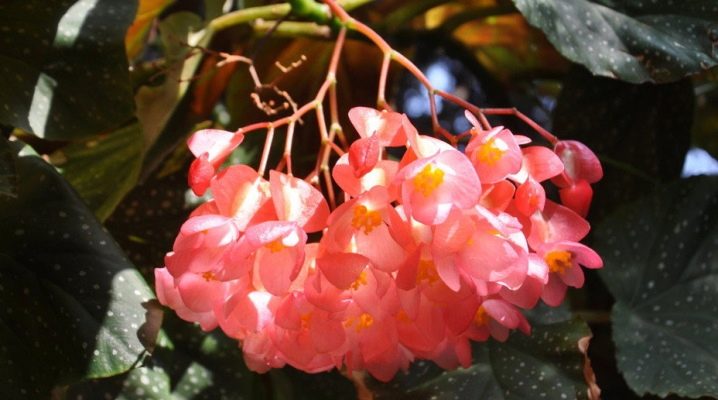
Coral begonia is not in vain a favorite of flower growers, it looks incredibly attractive, does not require serious, complex care, and is not capricious. Even a novice botanist can handle the cultivation. Experts say that with well-organized care procedures, good conditions, begonia will grow and develop without problems.
The flower is good because it is suitable for breeding in almost any room: in specially equipped greenhouses or in standard apartments of a small area.
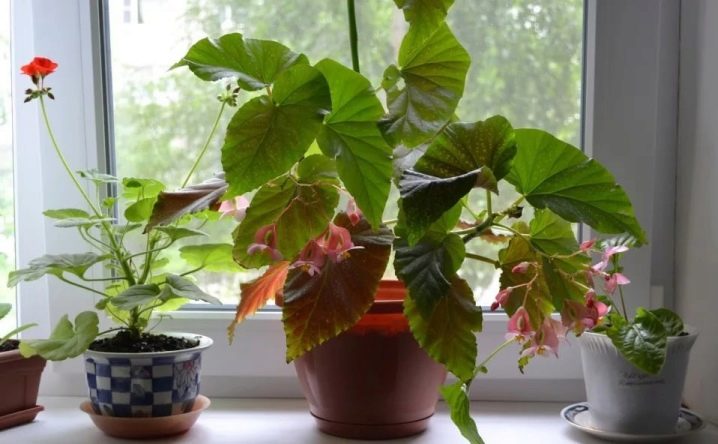
Peculiarities
Greenhouse plants can stretch up to 2 meters in height, home begonia looks somewhat neater and smaller. Begonia as a representative of the flora is very common in our country, there are more than 1500 of its varieties. Coral begonia is one of the most beautiful and unpretentious representatives.
This wonderful flower was discovered by the Frenchman Charles Plumier in the 17th century. The botanist brought this plant to Europe, named it after Michel Begon, who sponsored the botanical expedition. Coral begonia (Begonia corallina) is also called "Corallina". The genus to which it belongs is Begonia, a decorative type of plant. This beauty came to us from sunny Brazil, respectively, has a tropical origin. The natural environment is rich in tall representatives of flora exceeding 1.5 meters in height, and at home the flower looks much more modest and rarely grows above a meter.
The foliage of begonia is arranged according to the next type and has a variety of tones of greenery - from juicy, saturated shades to light. The size of the leaf in width can be up to 7 cm, in length - up to 20. It has a juicy-fleshy surface of the leathery type, decorated with splashes of shades of milk and silver. During the period of active development, in the summer, the reverse side is painted in a persistent deep crimson tone, for which the flower got its name.
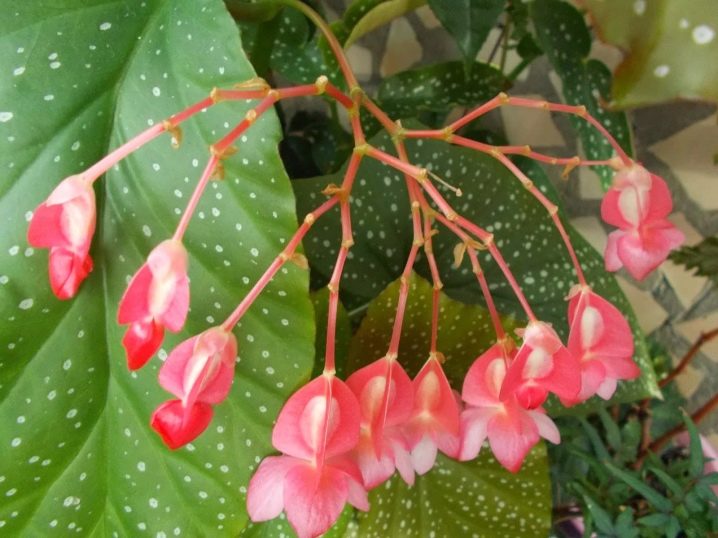
"Corallina" blooms, its inflorescences can be of different colors:
- pink;
- white;
- orange;
- red.
The flower is a 3- or 4-leafed compound, united by an inflorescence that looks like bunches of berry. The aroma of the bloom is very subtle, exquisite and pleasant.
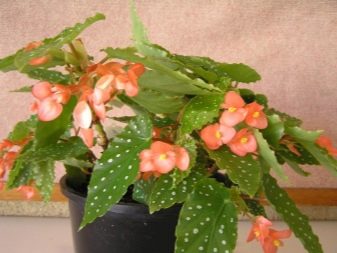
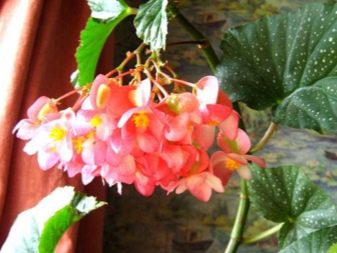
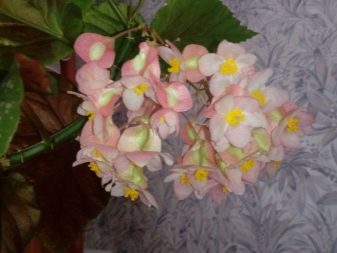

There are a lot of species and varieties of begonias, they get along well with each other, differing in color, size, and care features.
Very effective and popular are "Terry", "Naked", "Diadem", "Collar", "Mix", "Sizolistnaya", begonia "Bauer", "Mason", "Fista".
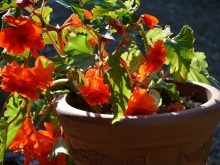
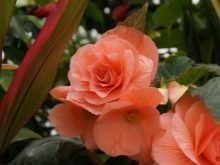
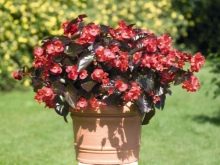
Landing
"Corallina" belongs to the most common group of plants - moderate lighting, so it perfectly coexists with other representatives of the same flora. Remember that the placement of plants flowering in close proximity to each other threatens inter-pollination and a change in flowering. It is still important to carry out the planting procedure correctly. Experts recommend adhering to the following algorithm:
- prepare a container of the appropriate size with a hole in the bottom, this will allow excess moisture to freely leave the pot, not stagnate and not adversely affect the root system;
- at about 2 centimeters, create a drainage layer suitable for: broken brick, pebbles, polystyrene, expanded clay or gravel;
- the drainage layer should be wider than the bottom;
- clay pots are preferred, since its composition is safe, and it does not heat up as quickly as other materials;
- as a moisture-permeable soil, it is recommended to purchase a ready-made mixture for violets or combine the necessary components yourself;
- optimal soil composition: two parts of ordinary soil, part of compost, part of peat, part of sand;
- such a connection is also possible: two parts of sheet soil, two parts of humus and part of sand;
- the optimal planting time is spring, after acquiring a flower, it should not be transplanted immediately, it is necessary to give it time to adapt to new conditions within a week or two.
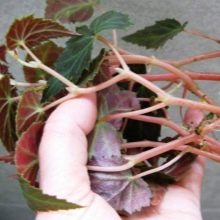
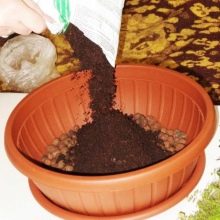
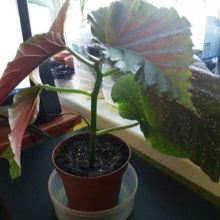
Care
The main condition for healthy development, beautiful flowering of begonia is proper care. Although it is simple, it has certain features that need to be remembered. It is recommended to take care of Corallina at home as follows:
- avoid the sun, as begonia in direct sunlight can burn the leaves, so do not place it on the south window and on the balcony;
- provide access to natural diffused lighting, slight shading does not harm the development of the flower;
- in winter, the plant feels great on the windowsill in the absence of drafts;
- it is best to place the flower on the window from the west, east or north;
- do not open the vents or remove the begonia from the window when ventilating, do not place it next to batteries and heaters;
- draft, cold and lack of light will either slow down the development of the flower, or lead to its illness and death.
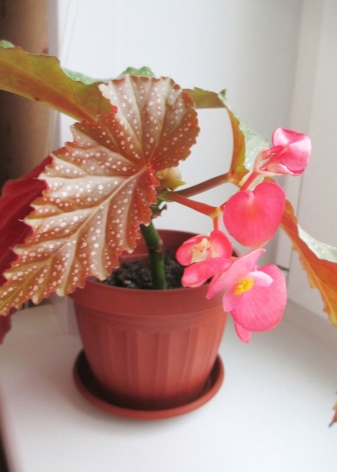
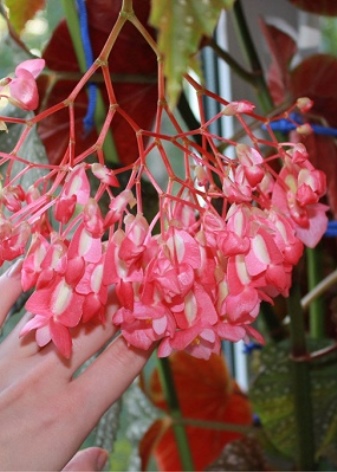
Moisturizing "Coralline" has a number of features:
- summer watering should be very abundant and regular;
- drying out threatens with disease and death of the plant;
- water with potassium supplements once every 2 weeks;
- in the spring, the plant is supported with phosphates;
- watering in winter should be reduced to moderate.
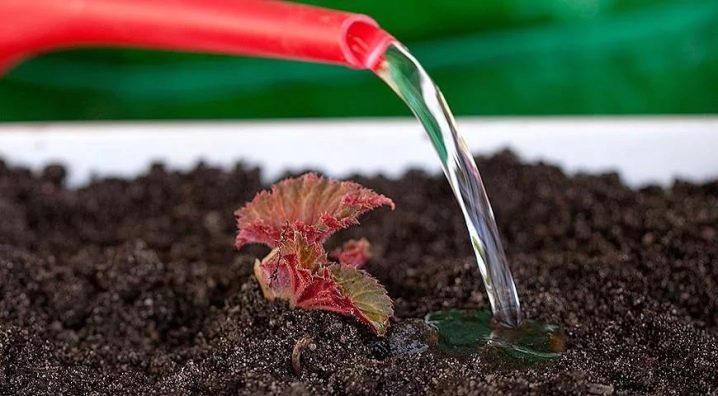
Remember that the optimal temperature and humidity will be beneficial for the development of begonias. Therefore, it is recommended to carry out moisturizing air treatments around the flower on a regular basis.
In this case, you cannot spray the leaves. The temperature regime should ideally fluctuate between +15 +16 degrees in winter and +18 +24 degrees in summer. As a care procedure, it is imperative to cleanse the bush from dead leaves and inflorescences, otherwise they draw out useful trace elements and interfere with the formation of a new inflorescence.
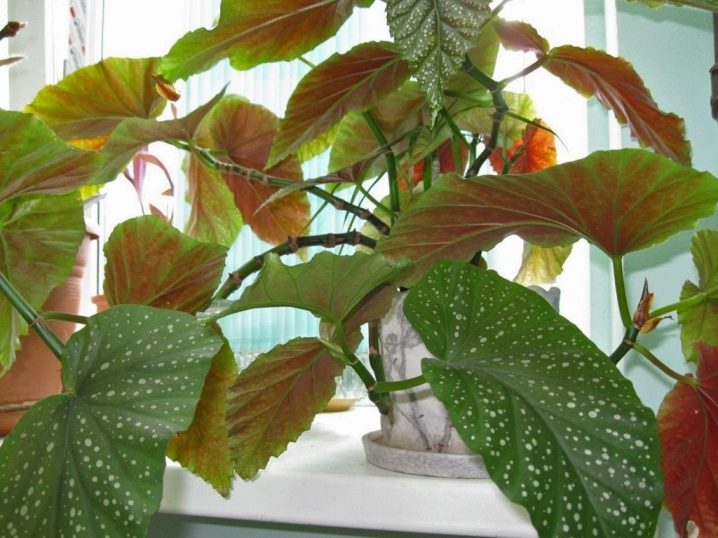
Pruning and pinching are necessary conditions for the formation of a beautiful, well-groomed plant. It is recommended to pinch the crown so that the plant shrubs, forming very spectacular leaves from the sides. Pruning overly elongated stems should be done regularly, otherwise the plant will lose its neat appearance.
Florist experts advise pruning those shoots that appear behind the third internode. They can be used for seedlings.
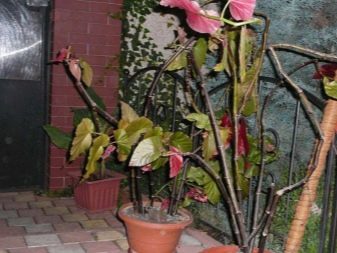
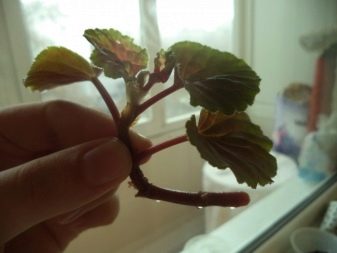
Transfer
The transplant of a young begonia should take place in the first week of summer; for this, a container of a larger size is selected. At the same time, remember that excessive volume can harm the flower, if it is not used, the process of root decay can begin. The houseplant is transplanted after watering the next day, the main thing is that the begonia does not bloom during this period.
A mature flower does not need to be repotted too often.
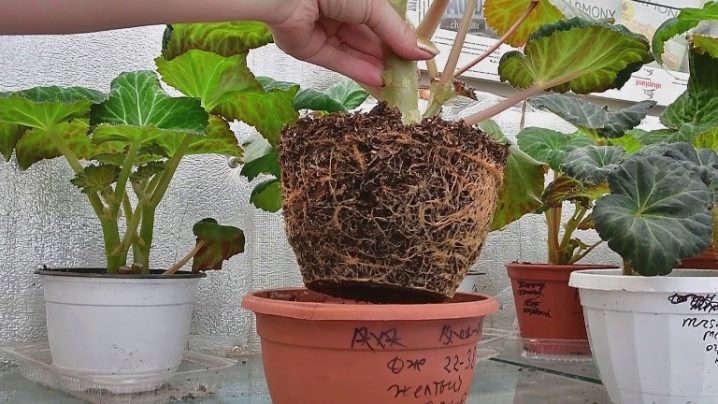
Reproduction
This representative of the flora reproduces under normal conditions by cuttings of a leaf type, about 10 cm long. After pruning, the shoot is placed in a glass of water or in a container with wet sand. As soon as the root system begins to form, and the roots grow by about 1.5 centimeters, you can plant it in the ground. To create a mini greenhouse environment, cover the plant with a glass jar. Make sure that the cutting is sprinkled with wood ash at ground level, this will protect it from fungal infections.
The second method of breeding coral begonias is leaf, which allows, in addition to the main goal, to rejuvenate a mature plant. The sheet is cut from the back side and placed in moist soil, covered with polyethylene for a greenhouse effect. Periodically cut off the areas with emerging roots so that the remaining ones grow more intensively. Divide the rhizomes when planting.
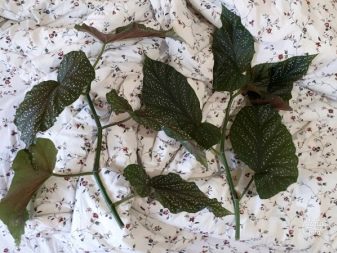
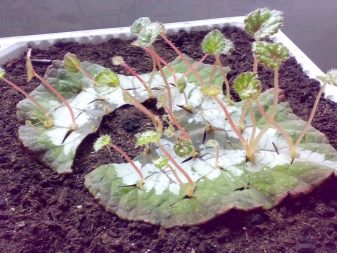
Diseases and pests
When growing this flower, you can face various diseases, insect attacks and other problems. The most common diseases are as follows.
- Gray rot. It is often caused by an increase in air temperature and excessive moisture. The characteristic features are whitish spots on the foliage, reminiscent of a bloom, which gradually covers the entire surface. These signs cannot be left without attention and medical procedures, otherwise the flower will die.
- Bacterial spotting. The characteristic signs of the disease are small specks of a watery type that form on the sheets. Unfortunately, this disease cannot be cured. If the plant suffers such a nuisance, it is necessary to throw it away and pour out the old soil. The container in which it was located is thoroughly washed.
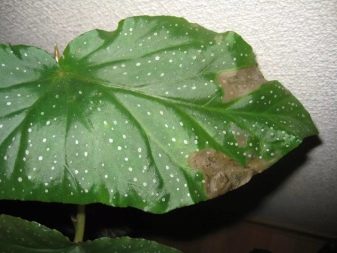
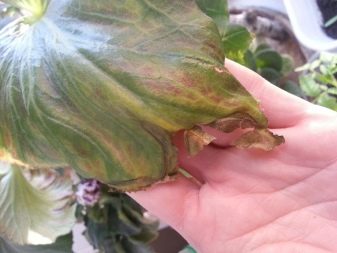
Among the insects that often attack begonia, experts call the spider mite and the scale insect. Here are some other problems that begonias can have during development, and how to deal with them:
- dumping of foliage in winter means hypothermia of the flower, it is necessary to increase the temperature in the room if the leaves fall off en masse;
- discoloration of the leaves before discarding indicates a nematode infection that cannot be cured, so the plant and soil will have to be disposed of;
- lethargy foliage indicates that Corallina is being exposed to harmful substances such as gas or tobacco.
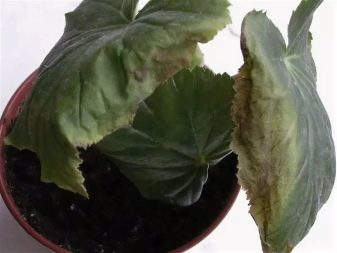
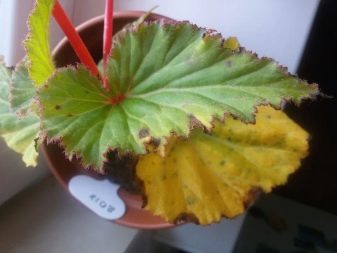
Perhaps the most common problem for begonia growers is the lack of flowering. The problem has a number of reasons:
- immaturity is a natural reason that disappears as soon as the plant matures to the desired age and gains strength;
- improper lighting, more precisely, its disadvantage, it is easy to solve this problem - move the flower to the light;
- dry air, as a rule, in addition to colorlessness, drying edges of foliage are also observed, an increase in the level of humidity in the room (humidifier, bowls of water) will help to correct the situation;
- the cold does not in any way contribute to the formation of beautiful inflorescences, so watch the temperature in the room;
- a lost rest period leads to a weakening of the plant, it does not have enough energy for flowering, you need to restore the schedule by moving the flower to the shade for the summer, reducing daylight hours, reducing moisture, then slowly restoring the state of begonia;
- the lack of trace elements also has a bad effect on flowering, transplanting into high-quality soil, specialized for this type of plant, will help;
- pests, diseases do not contribute to healthy flowering, it is necessary to treat "Corallina" if possible.
Competently organized care is the key to a beautiful, abundant flowering and a healthy appearance of a room beauty.
See below for grafting coral begonia.































The comment was sent successfully.